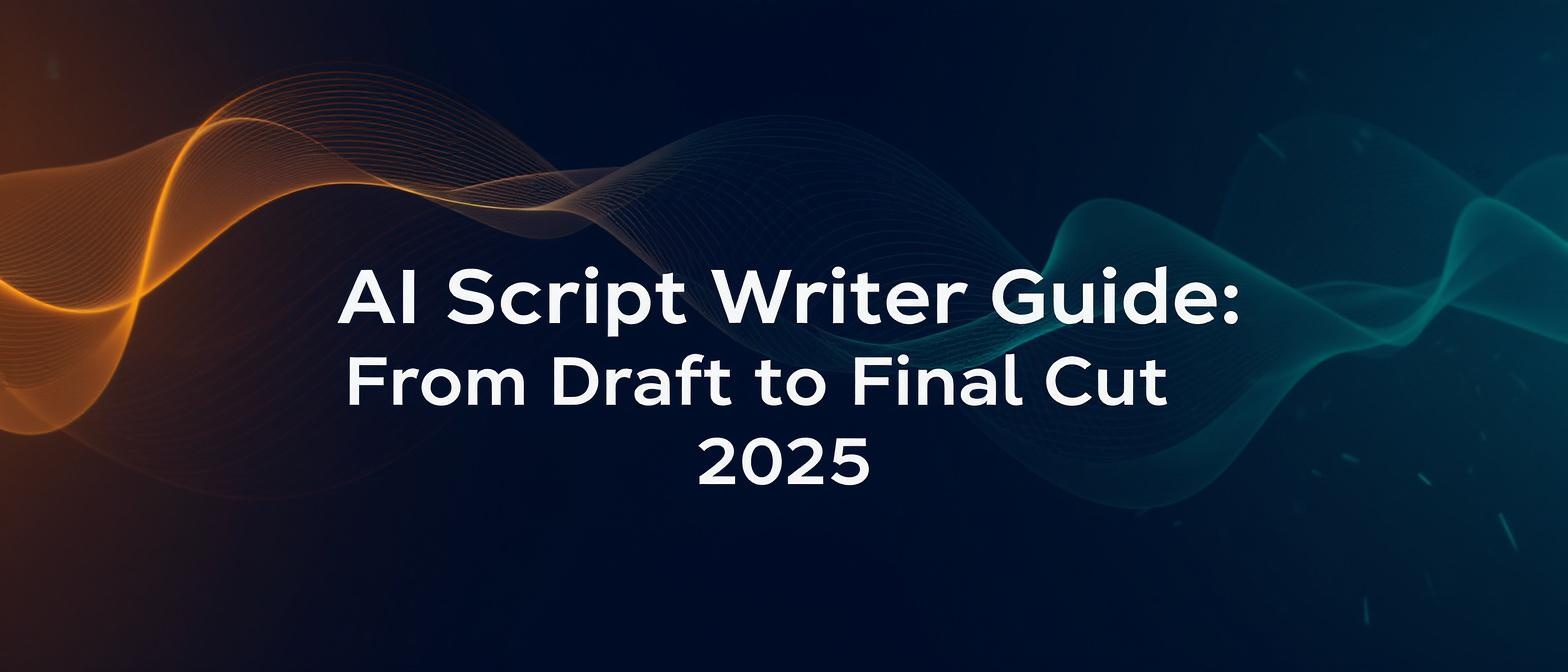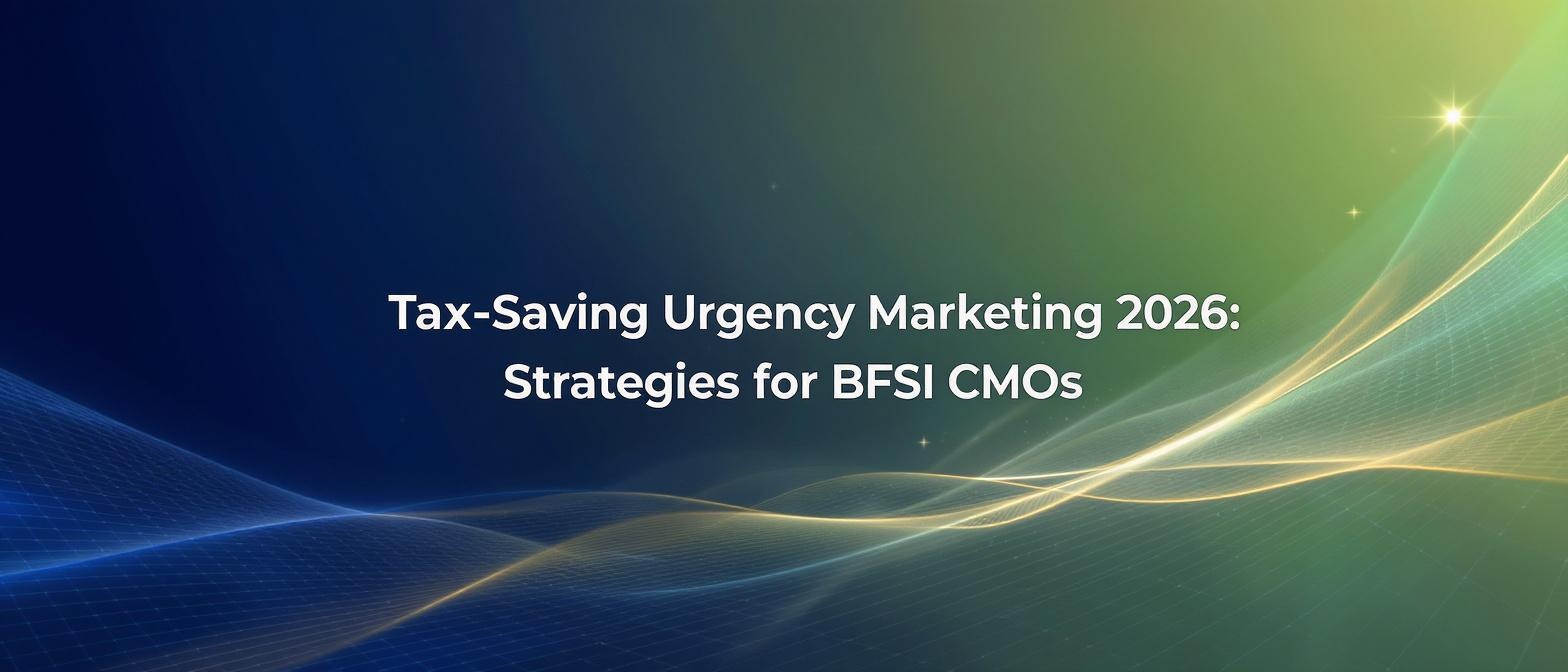The Ultimate Guide to AI Script Writers: From First Draft to Final Cut in 2025
Estimated reading time: ~12 minutes
Key Takeaways
- AI script writers act as a co-pilot to augment human creativity.
- A solid brief and clear objectives are crucial for effective AI output.
- Personalization at scale boosts engagement and ROI.
- Ethical considerations around transparency and bias are increasingly important.
- Platforms like Studio by TrueFan AI streamline global, multilingual video content creation.
In the ever-accelerating world of digital content, video reigns supreme. It's the engine of social media, the heart of marketing campaigns, and the primary way we learn and connect online. But behind every great video is a great script, and for many creators, marketers, and businesses, the scriptwriting process has become a significant bottleneck. Staring at a blank page, struggling to find the right words, and battling creative blocks can stall entire projects. But what if you could transform this bottleneck into a superhighway? This is where the strategic implementation of an AI script writer is fundamentally changing the game. Read more here
The conversation around AI in creative fields is evolving. It's no longer about replacement; it's about augmentation. It's about partnering with intelligent tools to unlock efficiency, data-driven insights, and a level of scale previously unimaginable. This comprehensive guide will take you beyond the basics of AI-powered text generation. We will explore how to leverage these tools as a strategic co-pilot, moving from foundational principles to advanced, ROI-driven strategies that will define successful video content in 2025 and beyond.
The New Creative Revolution: Why AI Script Writers Are More Than Just Tools
To truly harness the power of AI in scriptwriting, we must first shift our mindset. An AI script writer isn't a magic button that spits out a perfect, finished product. It's a powerful collaborator—a co-pilot that can analyze vast datasets, identify patterns, and handle the heavy lifting of ideation and drafting, freeing up human creators to focus on the uniquely human elements of storytelling: nuance, emotional intelligence, and strategic vision.
Understanding the AI Co-Pilot: Augmenting, Not Replacing, Human Creativity
The fear of AI replacing human creativity is widespread, but the reality is far more collaborative. AI excels at tasks that are often tedious for humans: generating multiple hook variations, structuring a narrative arc, or adapting a core message for different audiences. The human writer then acts as the director, the editor, and the strategist, refining the AI's output, infusing it with brand voice, and ensuring it connects on an emotional level.
This symbiotic relationship is fueling a massive industry expansion. According to recent market analysis, the AI-generated video market is projected to grow at a staggering 35% annual rate, on track to reach a value of nearly $14.8 billion by 2030. This growth isn't just about technology; it's about the tangible value creators are finding in this new partnership. By delegating the formulaic aspects of writing to an AI, you reserve your most valuable resource—your creative energy—for what truly matters.
Laying the Foundation: Strategic Inputs for High-Impact Scripts
The quality of an AI-generated script is a direct reflection of the quality of the instructions it receives. Garbage in, garbage out. To move from generic text to a compelling narrative, you must first master the art of providing the AI with a clear and strategic creative brief.
Before You Write a Word: Defining Your Why
Before you even open a scriptwriting tool, you need to establish your strategic pillars. An AI can't read your mind, but it can process well-defined parameters with incredible precision.
- 1. Define Your Objective: What is the single most important thing you want this video to achieve? Is it to generate leads, increase brand awareness, educate customers about a new feature, or drive sales for a specific product? A clear objective like “Generate sign-ups for our new webinar” will yield a far better script than a vague goal like “Make a video about our product.”
- 2. Identify Your Target Audience Persona: Who are you talking to? An AI can adjust its tone, vocabulary, and style with remarkable sophistication. Provide it with a detailed persona. For example: “My audience is ‘Startup Sarah,’ a 30-year-old SaaS founder. She's tech-savvy, time-poor, and values data-driven solutions. The tone should be professional but conversational, avoiding corporate jargon.”
- 3. Nail the Core Message: What is the one key takeaway you want your audience to remember? Distill your message into a single, powerful sentence. This “golden thread” will be the anchor for your entire script, ensuring every scene and line of dialogue serves the central purpose.
The Anatomy of a Viral Script: Structure and Flow
Once your strategic inputs are defined, you can guide the AI to build a script with a structure optimized for viewer engagement. In the age of dwindling attention spans, the first few seconds are critical, and a logical flow is essential to keep viewers watching.
- The Hook (0-3 Seconds): Your opening must be irresistible. Ask the AI to generate hooks based on proven formulas:
- Ask a provocative question: “What if you could cut your production time in half?”
- State a shocking statistic: “90% of businesses are using video, but only 10% are seeing real ROI. Here's why.”
- Start with a relatable problem: “Staring at a blank screen, waiting for script ideas to appear? We've all been there.”
- The Rising Action (Problem/Agitation): After hooking the viewer, expand on the problem. Use the AI to brainstorm pain points and challenges your target audience faces. This builds empathy and makes the eventual solution more impactful.
- The Climax (The Solution): This is where you introduce your product, service, or idea as the answer to the problem you've just agitated. The AI can help you frame this solution in terms of benefits, not just features.
- The Call to Action (CTA): End with a clear, concise, and compelling instruction. Tell the viewer exactly what to do next.
Modern AI video platforms are designed for this kind of rapid iteration. Platforms like Studio by TrueFan AI enable creators to test different script structures rapidly by generating video previews in minutes, allowing for data-driven decisions on which narrative flow resonates most with the audience. Learn more here
Advanced AI Scriptwriting Techniques for 2025
With the fundamentals in place, it's time to explore the advanced capabilities that separate high-performing content from the rest. These techniques leverage AI not just for speed, but for deeper connection and global scale.
Beyond Basic Prompts: Mastering AI for Emotional Resonance
The next frontier of AI scriptwriting lies in its ability to understand and generate emotionally resonant content. By training on vast libraries of literature, film scripts, and marketing copy, advanced models can identify the linguistic patterns that trigger specific emotions.
You can guide your AI to:
- Analyze Sentiment: Input a draft and ask the AI to rate its emotional tone. Is it inspiring, urgent, reassuring?
- Suggest Power Words: Prompt the AI to “sprinkle in words that evoke a sense of exclusivity” or “replace generic adjectives with more emotionally impactful alternatives.”
- Craft Analogies and Metaphors: Ask the AI to “explain this complex technical concept using a simple analogy related to sports” to make your message more relatable and memorable.
The Power of Personalization at Scale
Generic, one-size-fits-all messaging is dead. Today's audiences expect content that speaks directly to them. While creating thousands of unique videos manually is impossible, AI makes personalization at scale a reality. A 2025 report highlighted a game-changing metric: emails containing a personalized video see up to 8 times higher click-through rates than standard email campaigns. Discover more here
By connecting an AI script writer to your CRM or customer data platform, you can automate the creation of scripts that include:
- The viewer's name or company name.
- References to their industry or specific pain points.
- Data points relevant to their usage of your product.
This level of personalization fosters a powerful sense of connection and dramatically increases conversion rates. As noted by marketing experts at McKinsey, consumers don't just appreciate personalization; they now demand it.
Global Reach, Local Feel: AI-Powered Multilingual Scripting
Expanding into international markets has historically been a complex and expensive endeavor, requiring translation agencies, local voice actors, and separate production workflows for each language. AI is completely revolutionizing this process.
Modern AI can translate a script into dozens of languages in seconds. But the true breakthrough is in the delivery. AI-powered voice cloning and avatar technology can now deliver these translated scripts with accurate accents, intonations, and, most importantly, perfect lip-sync. This ensures that the content feels native and authentic to each region. With data from 2025 showing that presenting content in a consumer's native language can boost engagement by as much as 96%, this capability is no longer a luxury—it's a competitive necessity.
The technological integration is key here. Studio by TrueFan AI's 175+ language support and AI avatars make it possible to deploy a single core script across dozens of markets with authentic, localized delivery. This collapses the global content workflow from months to minutes. Read more
Measuring What Matters: The ROI of AI-Driven Video Creation
For any business, the adoption of new technology must be justified by a clear return on investment. The benefits of using an AI script writer extend far beyond creative convenience; they have a direct and measurable impact on the bottom line.
Connecting AI Scripts to Business Outcomes
The efficiency gains are the most obvious starting point. By automating the initial drafting and versioning process, teams can reduce the time spent on scriptwriting by 50-70%. This frees up talent to focus on higher-value strategic tasks and dramatically shortens the overall video production timeline.
But the ROI goes deeper. We can measure the impact of AI-driven scripts against key business metrics:
- Engagement Rate: Are AI-optimized hooks and structures leading to higher view-through rates and more comments/shares?
- Conversion Rate: Are the personalized, benefit-driven CTAs generated by AI leading to more sign-ups, downloads, or sales?
- Time-to-Market: How much faster can you launch a new campaign or respond to a market trend when the scriptwriting process is accelerated?
- Cost Savings: Calculate the reduction in freelance writer fees, translation services, and production overhead.
It's no surprise that a recent Wyzowl survey found that 92% of video marketers report being satisfied with the ROI from their video marketing efforts. AI tools are a major driver of this satisfaction, making high-quality video production more accessible and scalable than ever before.
A/B Testing and Predictive Analytics
One of the most powerful ROI drivers is the ability to A/B test creative elements at scale. Before AI, testing different script hooks or CTAs meant producing multiple, fully-realized video versions—a costly and time-consuming process.
Now, you can use an AI script writer to generate ten different hooks and five different CTAs for a single video concept. Integrated AI video creation platforms can then produce lightweight previews for each variation. You can test these variations with a small audience segment to see which one performs best before investing in a full-scale launch. Some advanced AI platforms are even developing predictive analytics capabilities that can analyze a script and forecast its likely engagement score before it's even produced.
Solutions like Studio by TrueFan AI demonstrate ROI through dramatically reduced production costs and the ability to A/B test video creatives at a scale previously unimaginable, ensuring your marketing budget is always allocated to the highest-performing content.
The Ethical Scriptwriter: Navigating the New Frontier
As with any powerful technology, the rise of AI in content creation brings with it a new set of ethical considerations. Building trust with your audience and operating responsibly requires a proactive approach to transparency, bias, and data privacy.
AI Ethics in Content Creation: Transparency, Bias, and Originality
- Transparency: While there's no universal rule, it's becoming best practice to be transparent about the use of AI in your content, especially when it involves AI-generated avatars or voices.
- Bias: AI models are trained on vast datasets from the internet, which can contain inherent human biases. It is the responsibility of the human creator to review AI-generated scripts for any biased language or stereotypes and to ensure the final product is fair and inclusive.
- Originality: AI tools are designed to generate new content, but they learn from existing data. Always use plagiarism checkers and infuse the AI's output with your own unique ideas to ensure the final script is truly yours.
For a deeper dive into the broader implications of generative AI, institutions like MIT are actively researching and discussing the ethical frameworks needed for this new era.
Data Privacy and AI
When you input your ideas, customer data, or proprietary information into an AI tool, you need to know how that data is being used. Reputable AI platforms have clear privacy policies and robust security measures. Always choose tools from companies that are transparent about their data handling practices and prioritize the security of your intellectual property.
Your AI Scriptwriting Questions, Answered
Can an AI script writer truly understand my brand's unique voice?
Not automatically, but it can be trained. The key is to provide it with examples of your existing content—blog posts, ad copy, past scripts—and instruct it to adopt that specific tone, style, and vocabulary. The more context you provide, the closer the AI will get to your brand voice.
How do I avoid my scripts sounding robotic or generic?
The power is in the editing process. Use the AI to generate the initial structure and ideas, but then it's your job to go through and rewrite lines, add personal anecdotes, and inject human emotion. Think of the AI's output as a highly detailed blueprint, not the finished building.
What's the difference between a free AI script writer and a professional platform?
Free tools are great for basic text generation but often lack the advanced features needed for professional video production. Paid platforms typically offer superior AI models, better security, collaboration features, and—most importantly—integration with video generation tools, creating a seamless workflow from script to final video.
How can I efficiently create videos from my scripts in multiple languages?
This is where integrated platforms shine. For example, with Studio by TrueFan AI, you can input your script and have an AI avatar perform it in over 175 languages, handling the translation and lip-syncing automatically, which drastically streamlines global content creation.
Are there any copyright issues with using AI-generated scripts?
This is an evolving area of law. Generally, if the AI's output is significantly modified and infused with your own creative work, the final product is yours. However, it's crucial to use platforms that train their models on ethically sourced data and to avoid generating content that is too close to existing copyrighted material.
The Final Cut
The role of the AI script writer in 2025 is not that of an autonomous author, but of a strategic partner. It is a force multiplier for creativity, enabling individuals and teams to produce higher quality, more personalized, and more impactful video content at an unprecedented scale.
By mastering the art of strategic prompting, leveraging advanced techniques for emotional connection and personalization, and committing to ethical and responsible use, you can transform your video production workflow. The future of storytelling is a collaboration between human ingenuity and artificial intelligence. The blank page is no longer a barrier; it's an invitation to create, with a powerful co-pilot ready to help you bring your vision to life.




